

Seeking Langkasuka
Evanescent Kingdoms, Everlasting Spirit.
Written by: Dr Zulkifli Mohamad ,Monday,July 25,2005
Edited by: Alex Kerr
As we crossed the Kelantan, Malaysia border to Pattani, Thailand, and boarded a taxi, telling the driver that we wanted to go to history department of Prince of Songkhla University, the young Malay taxi driver asked us, "Are you looking for Langkasuka?" The answer was, Yes, we were.
Langkasuka was the ancient fabled kingdom of the Isthmus. Existing long before the Melakan Sultanate, and extending its influence even into modern times, it has been a lodestone for Malay historians and artists. "Looking for Langkasuka" is a journey of discovery, an attempt to dig through the many layers of influence from China, India, Cham, Siam, Sumatera, Jawa, and the Middle East, to discover the enduring essence of Peninsular Malay culture.
The history of the Malay-Indo world is very complex, one of its distinctive attributes being a kaleidoscopic turnover of political alignments, disagreements and separation movements. South East Asia in general has changed tremendously in the past hundred years and more so before that. Various powers mapped and remapped the states of the Golden Peninsula many times even before the arrival of the western colonials.
Modern Malaysia is the result of such a process, with rearrangement of pieces of the puzzle board even in very recent times. Malaya referring to the Malay Peninsula was divided by the British into Federated Malay States (Johor, Selangor, Pulau Pinang, Melaka, Perak, Pahang) and Non-Federated Malay States (Kelantan, Trengganu, Kedah and Perlis) in 1909. By 1957, when Malaya got her independence, Singapore was part of it. Sabah and Sarawak states on the west coast of Borneo joined Malaysia as East Malaysia in 1963 when the Federation of Malaysia was proclaimed. Two years later Singapore separated from Malaysia.
The result is that the country of Malaysia today consists broadly of three cultural spheres: Borneo (Sabah and Sarawak), the Southern Peninsula (formerly the Federated States), and the Isthmus (formerly the Non-Federated States). The cultural differences between these regions are still quite strong, as may be seen by the fact that in 1999 Malaysian General Election, Barisan Nasional, the ruling party led by Dr. Mahathir Mohamad lost power in two northern states, Kelantan and Trengganu. The people of these two states are known as staunchly traditional Malays and Muslims. They have a different socio-cultural history and behaviour as the history of these states could be traced back to the ancient kingdom of the Isthmus, known as Langkasuka, 2000 years ago.
North versus South
Malay scholars have tended to date the beginning of Peninsular Malay civilisation from the birth of the Melaka Sultanate on the west coast in 1402. They justify this on the premise that as far as existing materials permit, Peninsular Malay Kingdoms only take off from the period of Melaka Sultanate. There were three important historical documents on Melaka: Sejarah Melayu (Malay Annals), Undang-undang Melaka (Melaka Digest) and Undang-undang Laut (Maritime Laws), and these three provide much needed information on the nature of the Melaka polity and society. However this information applies largely to the Malays of the south and west coast of the Peninsula — it leaves open the question of what was going on in the north and east. The "History Began with Melaka" formulation is flawed, for it leaves out the story of civilisation up north along the Isthmus.
We get some indication of the situation in the north from the fact that the Melaka sultanate in its less than one hundred years in power tried but failed to conquer Kelantan in the mid-1400's. Melaka could not do so as Kelantan received military help from the Pattani Kingdom, known for its sophistication in war strategy. Hang Tuah, the famous Melakan warrior, who served in the court of three sultans, visited Pattani, probably after the first war between Melaka and Kelantan. It is not sure when he visited Pattani — either on his way to China or on the way back. In one account, Hang Tuah was supposed to have attacked Pattani but found out that the state of war art of Pattani was far greater than Melaka. Hang Tuah saw hundreds of canons surrounding the fort of the palace.
From Hang Tuah's description, it is clear that on the Isthmus, powerful and well-established kingdoms such as Kelantan and Pattani preceded the founding of the Melakan Sultanate. Melaka did manage to defeat Kelantan on its second attempt and ended with a marriage of the Kelantan Princess, Onang Kuning, to Mahmud Shah, the last Sultan of Melaka. Their prince, Muzaffar Shah became the first sultan of Perak in 1531. Mahmud Shah, escaped to Johor when the Portuguese conquered Melaka in 1511 and established a new sultanate in Johor. He then fled to Riau-Lingga island, and finally went into hiding and died in Kampar, Sumatera. The war, ending in marital alliance, is typical of the political give-and-take between north and south. Such relations go back a long way and are underscored by recent archaeological evidence of trans-peninsular routeways of Melaka-Kelantan and Melaka-Perak-Pattani. These routes have been traced though the discoveries of various proto-historic settlements.
One noteworthy aspect of the wars between Kelantan and Melaka is the fact that in the Malay world of those days there was a blurred line between conquest and alliance. We can see this in the fact that the "defeated" Kelantan dynasty, through Princess Onang Kuning, ended up establishing marital ties with the sultanates of Melaka, Johor, and Perak. Another example would be the Sumateran kingdom of Sri Wijaya, centered at Palembang. In 685, the Chinese pilgrim Yiqing reported that Kedah had "become Sri Wijaya", which suggests that Sri Wijaya conquered Kedah. At the same time, other Chinese accounts referred to Sri Wijaya as a "double kingdom" with a capital in the north (identified as Kedah, or more likely, Kelantan) and a capital in the south (Palembang). It is not clear who was ruling who. This blurred line between conquest and alliance is important to keep in mind when reviewing the rise and fall of kingdoms and dynasties on the Isthmus, as described below, because it suggests that external political changes, such as apparent changes in rulers, may not have influenced local culture so much as we might imagine. Dynasties came and went; local polities survived.
The Beginnings
Critical to the history of the Isthmus is sheer geography. This narrow bridge of land was the nexus between China and India, between Siam and the Malay-Indo world, and it became as a result the natural landing place for Indian, Islamic, and Chinese traders, as well as the ever-fluid travels of the Malays themselves. What we might call the "Isthmian Malay region" stretched roughly from the area of Chaiya in present-day Thailand down to Kedah and Trengganu in Malaysia. This stretch of land, blessed with ports opening on oceans east and west, was the doorway to the natural riches of the "Golden Kersonese", and for this reason it became a jewel fought for and constantly attacked by Siam, Jawa, Sumatera, and Melaka. Given its strategic position, it is not surprising that the first accounts of ancient empires on the peninsula are centered on the Isthmus region.
As for what existed before the Melakan Sultanate, local Malay traditions and recent archaeological findings point to the existence of ancient pre-Melaka states such as Gangga Negara, in the Bruas-Dinding area prior to the foundation of the sultanates of Perak Sultanate, Trengganu and Kedah. Chinese r ecords of the Sui Dynasty onwards also speak of the existence of Kelantan and Pahang kingdoms in the pre- Melaka period. Not all the evidence is conclusive; in many instances there are far fetched speculations about the possible location of particular places, the names of which are available only in renditions of foreign languages such as Chinese and Arabic.
However, there is no doubt that a series of distinct kingdoms ruled the Isthmus from at least the first century, and by the 3rd century Chinese records give the names of about a dozen small states. From the 3rd until the 6th century, the Isthmus fell under the sway of Funan, an empire extending along the lower Mekong River in what is now Vietnam. Funan was the word the Chinese used to refer to the proto-Khmer Kingdom unified in the third century. This Hinduized empire imposed authority on the whole of the Isthmian section of the Malay Peninsula and the overland trade route, lasting for three hundred years.
The Isthmian Malay states regained their independence in the middle of 6th century after the Khmer Prince of Kambuja conquered Funan. From this time onwards important Malay states begin to appear in Chinese annals. Of the states mentioned, Tambralinga, another name for Ligor (present day Nakhorn Sri Thammarat), was situated near the northern limit of the Malay world. It is around this time that the Kingdom of Langkasuka first appears. Langkasuka (which the Chinese called Lang Ya Shu) was the largest and most prosperous of these early kingdoms, and may have covered the full width of Isthmus, lying to the south of Ligor and to the north of the present Malay Peninsula.
Courts of Malay Isthmian rulers in the early 7th century showed a high standard of elegance and luxury. Accounts describe Buddhism as the religion of the country, while Brahmans held positions at court. Throughout the first millennium of the Christian era, the Malay Kingdoms of Langkasuka and Ligor continued to appear in Chinese records, which described the Malay city states as prosperous reaching a high level of economic and cultural development.
Sri Wijaya and the Isthmus
Through conquest — and also subtly through alliance and defeat — the Isthmian states managed to survive in various guises and flourish from the 6th until the 14th centuries. From the beginning their history was intricately interwoven with more powerful empires to the north and south. To the north they alternately warred against and allied with the Khmer, and later the Sukhotai and Ayudthaya empires of Siam; to the south with the Sri Wijaya, and later the Sailendra and Majapahit empires in Sumatera and Jawa; to the west with the Chola empire in India.
The interplay with Indonesia is the most important of all influences, especially in the early period before the rise of Siam. Sri Wijaya, based in its early years at Palembang in Sumatera, was the mother empire of the Indonesian archipelago, the one from which all the others in Sumatera, Java, and Bali later sprang. It continued in different guises and locations from the late 7th century until the 14th century, and at various times exerted hegemony over the Malay peninsula.
By the 8th century a rival kingdom was thriving in central Jawa known as the Sailendras; they too controlled the Isthmus for a brief period. The Sailendras were related to the old kings of north-central Jawa as well as to the Sri Wijaya ruling house in Sumatera. Prince Patapan fled from Jawa to Sri Wijaya in 832 to ascend the throne, with the result that the Sailendra line was extinguished in Jawa but continued in Sri Wijaya on Sumatera. The history of Sri Wijaya is inextricably linked with the ruling houses of the Malay peninsula. For example, in the 15th century, Parameshwara, a Sri Wijayan prince fled from Sumatera to Singapura Temasek before he became the sultan of Melaka.
After Prince Patapan moved to Sumatera in 832, power in Jawa shifted from the centre to the east of the island. The Sailendras yielded to a series of dynasties in east Jawa who thrived from the 9th until the 15th century, most important of which was the Majapahit, dated usually from 1292 until about 1500. During the heyday of the Majapahit in the 14th and 15th centuries, the Malay Isthmian states appear at times to have been a part of the Majapahit empire. The subtle shifts of power along the Isthmus are very complicated and not many scholars have looked into this thoroughly. Meanwhile there were powerful influences from Chinese, and in later centuries, Islamic traders.
In about 1025, Rajendra Chola of South India attacked and subjugated Kedah, with the result that the Kedah region flourished with a Hinduized civilisation which has left the largest pre-Islamic monuments on the peninsula. Meanwhile, it was recorded in Pali chronicles of the 15th century that Sujitaraja, the Buddhist Malay Raja of Ligor had married a Khmer princess in the second half of the 10th century. The close association between 10th and 11th century Khmers and Isthmian Malays at the highest level provides many reasons that the ancient culture of the two peoples has much in common. The Malay rulers of Ligor acquired strength and ambition from their Khmer association.
So important is Sri Wijaya to the history of the Isthmus that there have been several attempts by scholars to place its capital there. Thai academia has a long tradition of adopting neighbouring dynasties as their own, viz. the identification of the original Thai nation with the Dali Empire of Yunnan. In similar fashion, Thais have claimed Chaiya or Cahaya (which in Malay means light), as the site where Si Wichai (Sri Wijaya) was. On the other hand, J.L. Meons (1937) believed that early Sri Wijaya was located in Kelantan and K.A. Nilakanta Sastri (1949) supported the idea. The Kelantan theory may not be far-fetched, since Chinese Sui Dynasty annals of the 7th century describe an advanced kingdom called Chi Tu ("Red Earth") as being in Kelantan. The ancient name for Kelantan was "Raktamrittika", meaning "Red Earth" — this was later changed to "Sri Wijaya Mala". The capital of Sri Wijaya Mala was called "Valai", and it was situated along the upper Kelantan river of Pergau, known for its rich gold mines.
The controversy over the true location of Sri Wijaya arises because of the fact that after the death of Maharaja Sri Jayanaga around 692, during the mission to capture Jawa Island, Sri Wijaya seems to have been divided into two states. The eldest son Maharaja Dipang ruled over Amdan Negara, that is, the Malay Isthmus, probably Kelantan/Kedah. The second son, Maharaja Dhiraja, ruled the islands (Sumatera and other islands of the Indonesian archipelago), based at Palembang. After the division into east and west, the name of Sri Wijaya remained in Sumatera, but on the Malay peninsula, a poetic title emerged for the Kelantan/Kedah area, namely, Tanah Serendah Sekebun Bunga (Valley of Flower Garden Land). This title is still found in traditional performing arts such as Mak Yong dance, Wayang Kulit puppet theatre, etc. By 730 the capital of Sri Wijaya in Sumatera moved from Palembang, known as Langkapura, to Kota Mutajap near the river mouth of Jambi in Sumatera.
It is reasonable to speculate that some elements of the Sri Wijayan culture originated in Sumatera, but later spread to other parts of South East Asia from Kelantan/Kedah. Yawakoti meaning Jawa Point, is situated at Bukit Panau hill along the upper Kelantan river near Pergau; some believe this place to be from which Jawanese politics and culture spread out. Jawa Duipa, an ancient name for Kelantan means Tanah Jawa ("land owned by the Jawanese"), or Kawasan Jawa ("Jawanese area").
Al Tabari states that the word Jawa or Jva was used more widely in ancient times. Jawa in those days meant "Jawanese culture" (i.e. Malay culture), including its centres on the Isthmus, as compared to now when Jawa only refers to Jawa Island in Indonesia. According to one tradition, the Jawanese moved down from Kemboja and spread out to the archipelago.
Looking for Langkasuka
Langkasuka is the name used, from very early times, for the kingdoms of the Isthmus. However, there are many conflicting theories concerning exactly where the kingdom of Langkasuka was situated. Hikayat Merong Maha Wangsa and The History of Kedah or Kedah Annals described Langkasuka as covering the Isthmus from sea to sea, from the port of Pattani to Kedah, with Gunung Jerai as the centre of the kingdom.
Notable among Chinese records is the Chi Tu Guo Ji, "Record of the Kingdom of Red Earth", written by the Sui Dynasty envoys after a visit to the peninsula in 607-610. This is the most important documentary evidence of an inland kingdom known as Chi Tu "Red Earth". There are a number of good arguments giving credence to the theory that the kingdom was situated in Kelantan. Upriver of the Kelantan area, Gua Cha is known for its early settlement some 8000 years ago. The Dabong-Pergau rivers are known for their clay deposits and witnessed the making of old black pottery; Tanah Merah (Red Earth) is the name of a place upriver of Kelantan. The capital of the kingdom was described in the Chinese annals as having triple gates more than a hundred paces apart painted with images of bodhisattvas and hung with flowers and bells ... to the rear of the king's couch there is a wooden shrine inlaid with gold, silver and five perfumed woods, and behind the shrine is suspended a golden light ... several hundred brahmans sit in rows facing each other on the eastern and western sides.
Chinese records written by Chang Chun during the reign of the 7th century Sui Emperor Yang Di, spoke of a kingdom called Lang Ya Shu in Chinese, identifiable as Langkasuka in Malay. Chang Chun described Langkasuka as one of the earliest individual states in South East Asia, a Malay Kingdom. Slightly earlier, the History of the Liang Dynasty 502-566 seems to support a Malay tradition that Langkasuka was founded at the end of the first century in the neighbourhood of what was later called Pattani. Lang Ya Shu proved to be of great economic importance, partly due to the existence of an overland trade route or portage across the Isthmus.
But which of these states is Langkasuka: Kedah, Kelantan, Pattani, or Ligor? Many scholars have come up with various theories, based on archaeological evidence, linguistic clues, or traditions from dance and folklore. Archaeologists point out that the Sungai Pattani River flowed from Kedah to Pattani with another route to Sungai Merbok, Kedah. They are trying to prove that the Bujang valley in Kedah, was the centre of Langkasuka, and the important ruins of Hinduized temples found there make it a strong candidate. Others have sought the origins of Langkasuka in its similarity with the names of Langkapuri, Langkapura, Langkawi and Alangkah Suka, the land of the legendary 17th century Princess Saadong. Paul Wheatley in Golden Kersonese insisted that Langkasuka was in Pattani. While we cannot be sure that Pattani was the capital of Langkasuka, Wheatley was not far wrong in pointing out that Pattani was a famous port of Langkasuka and later became a city-state in its own right before being subsumed as a province of the Thai Kingdom.
Stewart Wavell went seeking for Langkasuka in his romantic voyage depicted in The Naga King's Daughter, a cultural travel journal from Pahang in Malaysia to Chaiya in Thailand in 1963. Wavell described his excitement on meeting a girl named "Golden Naga" in Pattani. Golden Naga was a Manora dancer who described Manora as :
..the oldest of all magic from the land of Lakawn Suka. We merely pay our respect to the Princess Saadong.
Wavell drew together Lakawn Suka, the Pattani Malays' fairyland equivalent of Langkasuka, and Princess Saadong from the folk stories of Kedah. Golden Naga described Lakawn Suka as being near the hill of Bukit Sangkalalili in Pattani and placed the palace of Princess Saadong on the hill. Wavell discovered an old ruin at Yarang (Binjal Lima in Malay). His findings at this old Pattani monastery included:
Buddhas with cylindrical head-dresses of the Sri Wijaya style, carved with the naturalistic impulse of those Sailendras artists who worked such wonders at Borobudur in Central Jawa ... more interesting were the Dvaravati Buddhas of pre-Thai period, possibly prior to the 7th century when Langkasuka would have passed out of the orbit of Funan into the temporary vassalage of the Mons at Thaton before Sailendras spread their power over the former territories of Funan...
Wavell's comment on Funan is significant, because it lends credence to speculation that some of the earliest forms of Malay culture are to be found in Funan. Funan was Southeast Asia's earliest Indianized state, and it is known that Funan controlled the Isthmus from the 3rd to the 6th centuries. From there such influences could easily have spread south to Sumatera and Jawa.
Wavell wondered whether Yarang might even have been the capital of Langkasuka. However, H.G. Quaritch Wales and the Fine Arts Department of Thailand later asserted that the site was the northern capital of Sri Wijaya. Though Wavell knew that he could not make a clear archaeological connection between the Yarang ruins and Langkasuka, he insisted on linking Pattani with the tales of Langkasuka as they appear in folklore: the Story of King Merong Maha Wangsa, the Bukit Sankalalili hill, and the fabled Princess Saadong as revealed in Pattani Manora dance. H.S.H. Princess Piya Rangsit of Thailand believed in a variation of Wavell's theory, placing Langkasuka further north at Ligor/Tambralinga (Nakhorn Sri Thammarat) but she did not manage to fully research her discovery, as she was killed in a helicopter accident during a coup in the 1970's. Today, the Pattani people still believe that the old site of Yarang in Pattani is the site of the Langkasuka Kingdom, the same story they told Wavell nearly forty years ago.
The Chermin Empire and Majapahit II
While the history of the earlier periods is obscure, the later 14th and 15th centuries were a high point of the Langkasuka civilisation. Raja Sang Tawal the son of Raja Sakranta of the Melayur Empire, based at Ligor, moved to Kelantan after he was defeated by Siam in 1295 and lost Singgora (the old name for Songkhla). Kelantan then became the base for unified Langkasuka. In 1339, Raja Bharubhasa (Sultan Mahmud Syah) replaced his father Raja Sang Tawal as king of Langkasuka, and succeeded in grouping the Isthmus, Champa in Vietnam, and Samudra-Pasai in Sumatera into a new empire known as the Chermin Empire.
The period of the so-called Chermin Empire, reaching from Sumatera to Vietnam, was the zenith of Langkasuka power. Raja Bharubhasa captured Kedah from the mad king Raja Bersiong (Maha Prita Daria) and incorporated Gangga Nagara (the old kingdom of Perak) as part of the Chermin Empire. The Raja's sister, Dewi Durga ruled Lamuri, later known as Aceh. In 1345, the Siamese mounted a major attack on the Isthmus, with the result that Raja Bharubhasa was forced to offer gold and silver trees as tribute to the Kingdom of Sukhotai. The offering of tribute to Siam was a symbolic turning point, the "little weft within the lute" that centuries later was to end with Siam permanently capturing the northern portion of the Isthmus. Raja Bharubhasa moved upriver to another area in Kelantan called Bukit Panau, and named his new capital Jeddah, meaning "Jewel". The jewel capital of Raja Bharubhasa was situated very near the very site of the "Red Earth" kingdom of the 7th century — the original Langkasuka.
From this time onwards a tug-of-war with Siam ensued. In 1357 Gajah Mada of the Majapahit empire in Jawa defeated Siam and joined in a coalition with the peninsular states to successfully attack Ayudthaya. Gajah Mada declared Jeddah the capital of West Majapahit, with Jawa island being known as East Majapahit. History repeated itself, following the same pattern of Sri Wijaya when it split in the 7th century, and also located one capital at Kelantan/Kedah and another in Sumatera.
In 1395 Siam re-attacked the southern peninsula and captured Temasek in 1401. The power of Siam was on the rise. Sultan Iskandar Shah (Kemas Jiwa) was called from Jawa to come back and rule Kelantan, though he was married to the Majapahit Queen in 1427. Basing himself in Kelantan, Iskandar Shah proclaimed his kingdom as Majapahit II (1432-1502) with the capital called Kota Mahligai (Fort of Heaven). In 1467, Siam of Ayudthaya conquered Majapahit II, and Sultan Iskandar Shah fled to Champa and died there. His nephew Pateh Aria Gajah, who had served as Iskandar's prime minister, moved to Pattani. Later, Iskandar's son known as Mansur Shah briefly revived the Majapahit II kingdom in Kelantan. Majapahit II under Mansur survived a short time until defeated by Melaka in 1499.
As we can see from the fact that Iskandar Shah named his Kelantan kingdom "Majapahit II", the Majapahit empire of Jawa was inextricably connected to the history of the states of the Isthmus. Majapahit was known as the greatest empire of all states in insular Southeast Asia from 1300 onwards, claiming political control over most of the archipelago, but declining in the 15th century. Essentially, the relationship that earlier had existed between Sri Wijaya and the Isthmus evolved into one between Majapahit and the Isthmus.
Pattani
The final fall of Majapahit II in 1502 is sometimes taken by historians as the end of Langkasuka. However this defeat no more marked the end of Langkasuka than all the other victories and defeats, rises and falls of dynasty recorded earlier. The royal courts and culture of the region continued to thrive after 1500 — in fact the culture of the Isthmus reached its highest flower in the years that were to come. However, two important changes occurred at this time in the history of Langkasuka: First, with conversion to Islam by the Sultan of Pattani in 1500, the culture became Islamic. Second, the locus of Langkasuka shifted away from Kelantan, pulled higher up the Isthmus in a response to the growing power of Siam. From 1500 until 1900 power on the Isthmus was located in Pattani and Ligor (Nakhorn Sri Thammarat). This was the era of maritime power, and Pattani had an advantage over other states because of its important natural harbour.
Pasir Putih (meaning "white sand") is another name for Gresik, an earlier kingdom in Pattani history. It is the name of an old place in East Jawa, possibly during the Majapahit Kingdom. Gresik later became Pattani, and its importance grew after the beginning of the 14th century when Siam began to expand downwards and Ligor became a Siamese dependency. Pattani appeared in the records of the Ming Admiral Cheng Ho, who led a Chinese fleet to Melaka in the early 1400's. With the decline of the Majapahit and the Chermin empires after the 15th century, Pattani eventually gained hegemony over the Isthmus, and it maintained its independence long after Siam absorbed other northern Isthmian Malay states.
The glory of the Pattani Kingdom dates from the rule of Sultan Ismail Shah (1500-1530), who founded the Malay Muslim kingdom known as Pattani Darul Salam after he converted to Islam. It was believed that Islam in Pattani came way before Melaka (1412) and Trengganu (1303/1368), as Pattani was a seaport through which traders came and went, the source of Islamic teaching and cultural forms.
Pattani as the name of a city state may have been changed after the ruler converted to Islam. There is some dispute about the origins of the name, one theory being that the name derives from Pantai Ini in standard Malay language. At the same time, the people of Pattani, Kelantan and Besut (the northern part Trengganu) speak a very distinctive dialect in which the sounds Patta Ni mean "This Shore". Today, the Thais denote the language of the people in the south of Thailand is "Jawi", where Malaysians use Jawi to refer to the written script of the Malay language adapted from Arabic script. This script is thought to have originated in Pattani.
Pattani's Golden Era came after the fall of Melaka to the Portuguese in 1511. Four Queens ruled Pattani during this time: Queen Green (1584-1616), Queen Blue (1616-1624), Queen Purple (1624-35) and Queen Yellow (1635-86). Around 1688-90, the rule of Pattani shifted to the Kelantan royal line, and this scenario was reversed around 1730 when the Pattani royal line came to rule Kelantan. The last sultan of Pattani, Sultan Abdul Kadir Kamaruddin's (1899-1902) son Tengku Seri Akar was married to the daughter of Sultan Muhamad IV of Kelantan. Through the 16th century to the 19th century we can trace many Pattani royal sons and daughters married into the ruling families of Kelantan, Perlis, Trengganu, Pahang, Johor, Melaka and Kedah.
After the four Queens, the power of Pattani gradually declined. Where the rulers of Pattani had once commanded the whole Isthmus, their domains shrank to cover only the four provinces of Pattani, Narathiwat, Yala, and Sathun. Eventually they controlled only the area covered by the modern Thai province of Pattani, only to be swallowed up by Siam in the early 20th century. As Pattani declined, the Sultan of Ligor (Nakhorn Sri Thammarat), although still under Siamese suzerainty, regained a measure of independence, and it is from this that confusion has arisen as to the true location of Langkasuka.
The Thais tend to favour theories that place the centre of Langkasuka farther up north along the Isthmus, at Ligor, rather than at Pattani. Local historians in Nakhorn Sri Thammarat (Ligor/Tambralinga) believe that there were 12 states under the rule (or loosely federated with) the King of Nakhorn Sri Thammarat, before he was captured by the last King of Ayudthaya. This group of 12 states included Kelantan, Trengganu, Pahang and Kedah. At the end of the 18th century, King Taksin of Siam moved his capital to Thonburi after the Burmese sacked the city of Ayudthaya. As part of Taksin's military feats, he captured Ligor. King Taksin removed the King of Ligor and installed him as the Governor of Nakhorn Sri Thammarat.
Islam
Islamic scholars would like to think that Islam came to Pattani through Islamic mubaligh (messengers) during the Saljuk Caliphate (1055-1194) when the Saljuk's Wazir Nizam Al-Malik of Baghdad created a new Islamic teaching system, known as Fondok in Arabic, Pondok in Malay. Pattani is even now famous in the South East Asian region for its tradition of Pondok. The Pondok system centres around an apprentice community led by religious gurus who mainly train in Mekah. There were many famous Islamic scholars from Pattani. Although the first ruler of Pattani converted to Islam only in 1500, it is believed that Islam entered Pattani long before that through Persian and Indian merchants and messengers. Not only Pattani, but also Kelantan became an influential Islamic centre. Kelantan at one point came to be known as Serambi Mekah, "Verandah of Mecca" because of its function in spreading Islam to the rest of the Malay world.
Islamic culture later spread out among Malay scholars and nobles. Prophet Mohamad's famous sayings like "Do travel even to China to learn", "Trading is good in Islam" and Hijrah Lah "Do Move" [from one place to another for better life] adapted well to the traditional life-style of the Malays — travellers and adventurers who colonised all the thousands of islands of the Indonesian and Philippine archipelago and far into the vastness of the Pacific ocean. These Islamic ideas became important principles of Malay-Muslim life. With those concepts we can understand why there was freer movement in trading in the parts of Southeast Asia known in Malay as Nusantara or the Malay Archipelago.
What happened is that Islam took the kingdoms' borders away. The kingdoms ties became stronger through Islamic marriages, and the Muslim peoples of lands under completely different forms of government, such as Mindanao, Jawa, or the Malay Peninsula, discovered in their Islamic heritage bonds that transcended state boundaries. Because of that there was a constant flow and counter-flow of influences among the Malay-Muslim kingdoms such as Champa, Pattani, Kelantan, Trengganu, Pahang, Aceh, Jambi, Johor-Riau, Sambas, Brunei, Makasar, Pontianak, Banjarmasin, Kutai, Sulu, Mindanao and Palawan. This free flow of people and arts — one of the distinctive traits of the Malay world —was one of the reasons why Melaka became an important trading port in the Malay archipelago. Islam reinforced a pre-existing cultural unity for political protection and economic survival.
Muslim unity between the archipelagos and the peninsula seems to have been a combination of Islamic teaching with something ancient and inherent in the Malay character. Looking at the rise and fall of kingdoms, the complex interplay of empires whose reach extended from Jawa to Celebes to Vietnam, one cannot escape the sense that even before Islam, the peoples of the archipelago in general, and the Isthmus in particular, shared a common cultural bond that knitted states and royal houses into a flexible whole. The royal houses themselves were woven together in a seamless fabric — e.g. Kelantan's royal family ruling Pattani and then vice versa. The underlying unity within fluid historical change arose from deep-seated shared cultural roots.
The Malay Isthmus, centered during this time on Pattani, was the old heartland of this culture, and it was constantly a source of struggle between the Isthmian royal houses, Malay sultans on the peninsula and the Siamese kingdoms of Sukhotai, Ayudthaya, Lopburi and Rattanakosin. Pattani was not only famous for its port, but also for jungle products such as tropical woods, birds' nests, ivory, and minerals like tin, steel, silver and gold. During the Ayudthaya period Pattani was considered the second most important port on the peninsula after Melaka. According to old reports, Pattani had gold mines which attracted Chinese miners and Arab buyers. Intermarriages between local Malay, Thai, Chinese and Arabs created special features of the Pattani people.
In discussing what was Langkasuka, it almost impossible to define exactly where was this fabled kingdom that gave birth to so much Malay culture. Part of the problem is that Malay empires in general — not only Langkasuka, but Sri Wijaya and Majapahit also — were ever-shifting flexible realms where capitals moved and royal houses aligned and re-aligned. In the case of Langkasuka, the discussion is further complicated by the fact that there are really several Langkasukas. One Langkasuka, most narrowly defined, was the early 7th century kingdom of Lang Ya Shu described in Chinese annals. Another Langkasuka, the definition most commonly used, is a kingdom or series of kingdoms beginning with Lang Ya Shu and lasting until the fall of Majapahit II in 1502. Another Langkasuka, using the word in the broad sense favoured by artists and traditional folklore, refers to traditional Isthmian culture in general. In this larger Langkasuka, the Langkasuka of legend and art, a series of Malay kingdoms ruled the Isthmus more or less independently from the 1st century, surviving through the hegemony of Funan, Sri Wijaya, Chola, Majapahit, Siam, and the advent of Islam. This larger Langkasuka disappeared with the fall of Pattani in 1902. Only a century, well within a few generations of human memory, separates modern Malays from old Langkasuka.
The Isthmus Divided
For nearly two millennia, kings and empires had not succeeded in dividing the states of the Isthmus, but all this began to change at the beginning of the 20th century.
Since the time of Raja Bharubhasa in 1345, Isthmian states had paid tribute to Siam on and off. After King Taksin of Siam captured Nakhorn Sri Thammarat at the end of the 17th century, the paying of tribute, in the form of gold and silver flower trees became institutionalised for all the Malay states of the Isthmus right down to Kelantan, Trengganu, Kedah and Perlis. Meanwhile, the British consolidated their rule of the peninsula in 1824, and in recognition of the special tribute-paying status of the northern states, they were later designated the Non-Federated States of Malaya.
While these states paid symbolic tribute to Siam, they remained essentially independent kingdoms. Pattani was thus nominally under the reign of Siam, yet eluded her grasp, being ruled not from Bangkok but by a sultan of the Pattani royal line. Pattani and the Isthmian region had been a prize sought after by the Siamese since the Sukhotai period. Prince Damrong, the interior minister of King Chulalongkorn when he visited Pattani in the late 1800's, described the land as a country with enough salt in Kuala Bekah, to feed the whole Malay Peninsula, enough rice in Jaringau to feed the people of the land and fresh water fish in Jambu not to mention the salt water fish, and various tropical fruits in Telubang.
The power politics of Western imperialism during the 19th century provided Siam with the opportunity to gain what it had sought for six hundred years. Siam removed the sultan of Pattani in 1902, and in 1909 the Malay states of Pattani, Yala, Narathiwat, Satun etc. were officially handed to Kingdom of Siam after the signing of the Bangkok Treaty between Siam and Great Britain.
The formal division of the Isthmus into a Thai side and a Malay side has had a drastic impact on the civilisation of the region. After the Bangkok Treaty, "Malay" as an ethnic group became a reference to the Malays in Malaya (later Malaysia), especially to foreign scholars. Malays in South Thailand became known as "Thai Muslim", as a result of the expansion of the Kingdom of Siam and the modern nation building of Thailand after 1934.
With independence from colonial Western powers in the 20th century, accompanied by the rise of distinct national identities in Indonesia and Malaysia, the Malays of Sumatera became known as Melayu-Deli. Divided into separately named ethnic groups, the strongest apparent bond between the Malay people of the archipelago became Islam, with the result that they came to be known not so much as "Malays" as the "Muslims of South East Asia". The discussion of Malay before Islam became more sensitive among the people and political elite.
Because ancient Langkasuka was a Hindu-Buddhist kingdom and the modern Malay people are devout Muslims, this suggested to the Thais that Langkasuka was in the Kingdom of Siam. So Thai authorities have come up with various theories to claim Langkasuka as based in southern Thailand. In the same way, problems concerning the true origin of the Thai race led Thai historians to identify themselves with the kingdom of Nan Chao in Dali, southern China.
The making of the modern Thai state beginning in the late 1800's and early 1900's during the reigns of King Mongkut and King Chulalongkorn was indeed a smart move. Thailand's unification of various kingdoms in the north, north east and south, including the Malay states below Singgora (Songkhla) enriched the nation's economic and cultural resources.
Langkasuka Lost
In modern times, Langkasuka has become a victimised cultural source for Malay civilisation. It is a non-politically correct subject to discover for a modern Islamic country like Malaysia, and Malay Studies departments in Malaysian Universities steer clear of it. South East Asian studies need only concern themselves with political and economic matters. A controversial topic is preferably avoided, especially with the establishment of ASEAN.
Though cultural history is very much needed in the development of fine arts studies in Malaysia, universities side-stepped the controversy and devoted all their energy and resources for developing something new, denying and ignoring the cultural past. Thus Kelantan, Kedah, Perlis and Trengganu states to a certain extent became alien states in their own nation. Their cultural and social behaviours are often accused of backwardness. Because of that the people and the governments of these states are constantly trying to separate themselves from their cultural past and drive people away from indigenous Malay culture towards the popular Arabian style of Islamic movement.
The discussion about Langkasuka with Pattani scholars and people would not be complete without mention of the last sultan of Pattani. After 1902, Sultan Abdul Kadir was first exiled to Phitsanulok in the north of Siam but later took refuge in Kelantan where his in-laws lived. There were a few attempts by the Pattani royal family and Islamic intellectuals to start a separatist movement in Pattani but all failed, as both parties had different agendas. With the rise of communist movements in the Isthmus in 1960s and the activities of PULO guerrillas in southern Thailand, Malaysia strove to avoid being drawn into a conflict with Thailand, and this had the effect of driving the Malay states in Malaysia even farther from Pattani. Among the old people of Pattani, we can see the sadness of people abandoned by their sultan, as they continue to live there and pray in the mosque that the sultan and sultan before built. Meanwhile, young people are divided as to whether they should be Malay, Thai Muslim or Thai. It is sad that this should occur at the very heart of old Langkasuka which once ruled the Isthmus as the most ancient Malay kingdom before Islam, Thailand or Malaysia.
We often look at "Malay" as in Malaysia, a country that obtained independence from Great Britain in 1957. If we look at art forms we tend to concentrate on Malay Islamic art forms, when the arts flourished most, probably during Melakan civilisation, after the sultan converted to Islam. Modern Malaysian education tends to reinforce the view that Malay art forms started from Melaka after Islam, ignoring the northern states that have so much more historical background. The development of Malay culture after independence recognised Jawanese, Bugis and Sumateran immigrant origins, overlooking Langkasuka origins because Langkasuka was a Hindu-Buddhist state and its old centre of Pattani is now in Thailand.
In short, the official version of modern Malaysian culture is that Malaysia is a land of convergence of many immigrants from the Indonesian archipelago looking for new hope. In this formulation, lost is the soul of being peninsular Malay, of possessing indigenous cultural roots going back to Langkasuka, Funan, and before. It is worse for Pattani, since the once famous kingdom has become part of Thailand, a Buddhist country that downplays Malay racial and cultural identity, in order to develop its own distinct national culture.
Langkasuka culture is controversial in modern Malaysia because it tends to be defined as Buddhist or Hindu. Yet the arts of Langkasuka continued to flourish for four hundred years during the Islamic era of the Pattani Kingdom. In short, Langkasuka should not be looked at as period, a city, a particular religion — but rather as a cultural sphere.
Langkasuka Found
One of the unspoken but influential reasons why modern Malay scholars have not paid much attention to Langkasuka and its legacy is that from their perspective, the Isthmus lies on the fringe. Pattani, Kelantan, Kedah, Perlis, and Trengganu are barbarous places lying far away from the cultural centres they are familiar with. These are: Sri Wijaya and Majapahit from the 6th to the 14th centuries, Melaka in the 15th century, Singapore and Penang under colonial rule, and Kuala Lumpur today. The northern states remain still very much "Non-federated" from the point of view of mainstream Malaysian culture. Making them seem even more remote is the fact that they speak dialects that are difficult for outsiders to fully understand.
The strong Thai influence in the culture of the northern states also makes them seem outlandish from the point of view of central Malaysia. On the other hand, the Thais easily dismiss their own heritage acquired from the Malay states they absorbed because, looked at from the vantage of Sukhotai, Ayudthaya, and Bangkok, the Isthmus lies far to the south. Its culture, being Islamic today, is alien to them. Since King Rama V (Chulalongkorn), the process of absorbing the southern states into Thailand has been successful, with the result that the remnants of Islamic culture remaining there seem crude and simple. For the Thais too, Langkasuka lies at the fringe.
The same could be said of Indonesian scholarship, standing in awe of the monumental remains in Jawa, and dazzled by the Hindu arts of Bali. The Isthmus way up north seems very distant from the royal capitals of the Sri Wijayan and Majapahit empires and the later Islamic kraton of Solo and Yogyakarta. Seen from Jawa island, the arts of the Malay Isthmus appear old-fashioned, rustic, and folk — watered-down versions of classic Jawanese arts. In any case, since 1947 with the creation of the modern nation of Indonesia, the Isthmus today stands politically remote as well, a no-man's-land divided between two different countries, Thailand and Malaysia.
Yet, like the spokes of a fan radiating from a single hinge, what appears remote at the edges of the fan, may be the focal point holding all the spokes together. In other words, the fringe may be the hinge. Especially in the case of the Malay peninsula, the argument could be made that Langkasuka culture, far from lying at the fringe, was the primal and determinant culture of the peninsula for most of the historic period. Even today, it is the arts of Langkasuka as they have survived in the northern states and southern Thailand that wield the strongest influence on traditional Malay arts.
It's important to look closely at traditional arts such as dance, shadow puppets, martial arts, and wood carving because of a problem peculiar to Malay peninsular culture: a lack of tangible monuments. The Indonesian archipelago has Borobudur ; Cambodia has Angkor Wat, Burma has Pagan, Thailand has Sukhotai and Ayudthaya, Vietnam has Cham. Compared to these great monuments of the past, the Malay peninsula can boast only a modest group of Hindu remains in Kedah, slim pickings for those seeking the heart of a great culture.
The old cities of Melaka and Penang are the exceptions that prove the rule, for they have everything to do with Chinese and Western colonial influence, and almost nothing to do with indigenous Malay culture — they are not the places to seek the ancient Malay spirit. This lack of impressive monuments is a secret frustration and embarrassment for Malay historians.
But from another point of view, perhaps it is something to be proud of. Thoreau wrote: "Many are concerned about the monuments of the West and the East, to know who built them. For my part, I should like to know who in those days did not build them, — who were above such trifling." In asking ourselves what was the essence of Malay traditional culture, both before and after the advent of Islam, it would seem that the energies of common people, artists, and the ruling elite did not pour into building enduring monuments. Rather they went into ephemeral arts such as ritual, dance, music, pantun poetry, or wood carving in a sensitive response to the numinous forest and ocean environment in which the Malays lived. The belief that nothing is permanent is expressed in the 2-verse pantun:
Sekali air bah, Sekali pantai berubah
Once flooded, The shored is changed.
It could be said that not building enduring monuments was a trait of the Malay-Indo world in general. Java's great temples are in that sense something of an anomaly, by no means typical or representative of Malay culture in the rest of the archipelago, the peninsula, or the Philippines. Malays, as a rule, did not seek immortality in stones, brick, plaster, or gold and silver pavilions towering to the sky. They were above such trifling.
(Rujukan : http://svarnabhumi.blogspot.com/2005/07/seeking-langkasuka.html)


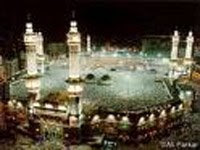
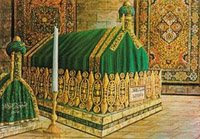




















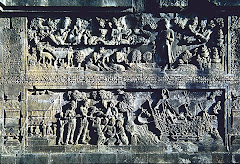



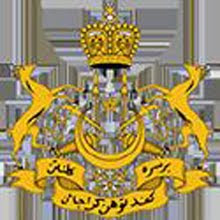

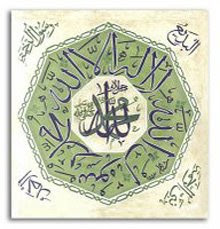
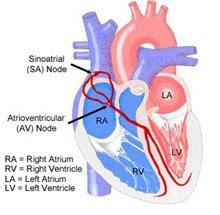
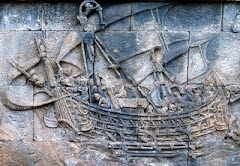

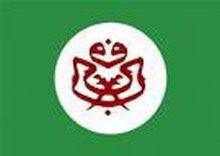
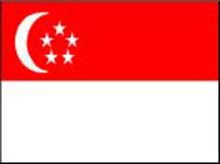




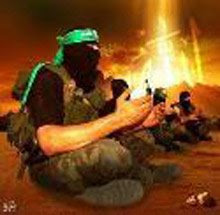

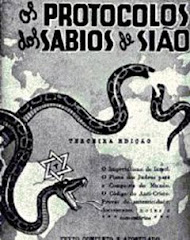

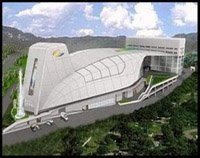

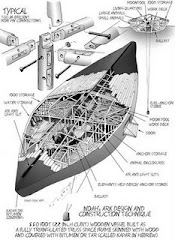
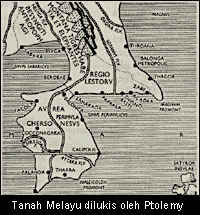
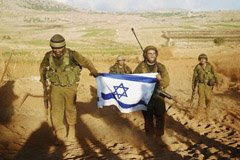



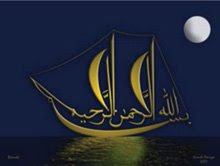














10 comments:
Topik yang menarik...
Salam saudara,
Menarik artikel mengenai Langkasuka....
Adakah Langkasuka ini .. tempatnya keluarga Mahsuri hidup dan dijatuhkan hukuman bunuh ... kerana fitnah ....
Sekadar bertanya ...
salam perjuangan.
salam ikhwanzm,
terima kasih atas kome,
maaf, saya tidak pasti!
wassalam.
salam saudara,
saya ucapkan syabas di atas usaha saudara menerbitkan beberapa artikel yang menarik mengenai sejarah kelantan dan ilmu-ilmu agama untuk pengetahuan umum. Semoga allah saja yang membalas keikhlasan hati budi saudara.
Berbalik kepada artikel saudara mengenai Langkasuka. Pada pandangan saya Langkasuka bukanlah sebuah kerajaan sehebat mana. Kalau dilihat dari salasilah keturunan raja kelantan. Raja Langkasuka diperintah oleh anak kepada Raja Sang Tawal iaitu Raja Raja Bharubasa dan kemudian Raja Singadhiraja (adik). Justeru kerajaan Langkasuka adalah di bawah penguasaan kerajaan ayahandanya Kerajaan Jawaka yang mungkin berpusat di Kuala Krai bekas dari Kerajaan Chih tu. Ini dibuktikan oleh catatan Ibn Batutta 1345 kerajaan yang diberi nama Tawalisi (atas nama Raja Tawal)ia sebesar kerajaan Cina. Menurut Chao Jao Kao pada 1225 seluruh Kelantan telah dibawah penguasaan Sriwijaya, walau bagaimanapun Kerajaan Sriwijaya tidak ujud lagi kerena telah diruntuhkan oleh Kerajaan Chola pada 1025. Namun, keturunan mereka (Kerajaan kecil)iaitu Maharaja Srimat Trailokyraja Maulibhushana Dewa (Brhmin) telah membangun sebuah Kerajaan Mauli di Dhamasjaya, berpusat di Batang Hari, Sumatra. Semua ini perlu dibuktikan dari penyelidikan arkeologi akan kewujudan tapak kerajaan Jawaka (Tawali) di Kuala Krai.
salam buat anon @ 12.31pm,
terima kasih atas komen,
Semoga Langkasuka akan kembali gemilang!
wassalam
Langkasuka tidak mungkin kembali gemilang kerana ia berada di dalam wilayah Thailand yang dikuasai oleh Kerajaan Siam dalam majoriti penduduknya orang Melayu. Dari bukti arkeologi kerajaan ini mungkin terletak di Yarang daerah Yala, berdasarkan jumpaan candi yang banyak ditemui di sana. Salah sebuah candi yang dijalankan ekskavasi ditemui ribuan artifak votive tablet berimejkan patung bodhistava (Sriwijaya). Menurut Nik Hassan Shuhaimi votive tablet ini merupakan wadah persembahan bagi setiap satu kematian yang diletakkan di dalam candi atau di dalam lubang gua seperti terdapat di Gua Chawas, Kuala Betis, Gua Musang, Kelantan.
Kegemilangan Langkasuka dari duhulu lagi telah berakhir apabila Raja Langkasuka memindahkan pusat kerajaan ke tempat baru berdekatan dengan pantai di kawasan teluk yang diberi nama Patani (daerah Kerisek). Kedudukan Langkasuka yang terletak jauh dari pantai menyebabkan kesukaran saudagar-saudagar untuk singgah berniaga. Justeru, peniagaan dalam negeri merosot dan berkurangan. Pembukaan negeri Patani terus berkembang, ramai penduduk Langkasuka telah berhijrah ke negeri baru ini. Maka nama Langkasuka tenggelam dan tidak disebut lagi. (sumber: Pengatar SEJARAH PATANI oleh Ahmad Fathy al Fatani (Pustaka Darussalam, Alor Setar; 1994)
salam anon@10.18am,
terima kasih atas komen.
Ya, bagi kebanyakan orang, Langkasuka tak akan kembali gemilang, tapi bagi mereka yg tahu termasuk kerajaan thai dan pejuang pemisah, mereka cukup mengenali bendera yg ditunjukkan dibelakang pejuang ini, sila lihat sini:
http://www.nationmultimedia.com/2008/07/17/national/national_30078331.php
Itulah bendera Langkasuka!
wassalam.
salam,
kenapakah ia mengambil masa yang lama baru sekarang timbul perjuangan untuk mendapatkan kebebasan sebagai sebuah negara yang berdaulat. Begitulah akibatnya kalau tanah air dibawah kuasa penjajah satu hari nanti rakyat akan memberontak juga akhirnya.
Apakah akan ada pemimpin seperti Raja Sang Tawal dan anaknya Puteri Urudja yang dapat mengembalikan kekuatan Langkasuka seperti dahulu. Semasa pencerobohan Sukhotai dibawah Rama Khamhaeng Sukhotai telah dimalukan oleh Langkasuka apabila Raja Rama Khamhaeng mati dibunuh oleh Puteri Urudja dari Kelantan. Mungkin rakyat Thai cuba menutup kejadian sejarah itu hingga tidak memberi tarikh yang jelas kematian Rama Khamhaeng yang mereka agung. Semoga bangsa kita di sana diberi kekuatan dalam perjuangan mereka.
Kita sebagai rakyat Malaysia cuma mendoakan kesejahteraan bangsa yang seagama dengan kita.
Salam, terima kasih kerana meletakkan tulisan saya dari tahun 1999. Saya masih ingin meneruskan penyelidikan dan penulisan tersebut setelah ianya dicuri oleh Spirit of Wood!
Dr.Zulkifli bin Mohamad aka Zubin Mohamad!
As salam,
Satu penulisan yang penuh dengan pencerahan.
Tak dinafikan, pusat penyatuan bangsa Mala aka Melayu memang berpusat di selatan Segenting Kra sekitar wilayah Kedah/Perlis hingga ke wilayah Patani/Kelantan.
Sesuatu yang menarik minat saya adalah bagaimana kerajaan Tanah Merah dan warisannya menyambung setiap Kerajaan2 Melayu sekitarnya. Bermula dari Funan, Champa, Kedah Tua, Sri Wijaya hingga ke Majapahit, Melaka & Acheh.
Mungkin saudara juga boleh usahakan untuk cari kaitan antara Tanah Merah dan Kerajaan Buni di Borneo sebelum tubuhnya Kesultanan Brunei juga. Wujud jaringan antara keduanya melalui Kerajaan Champa.
Post a Comment